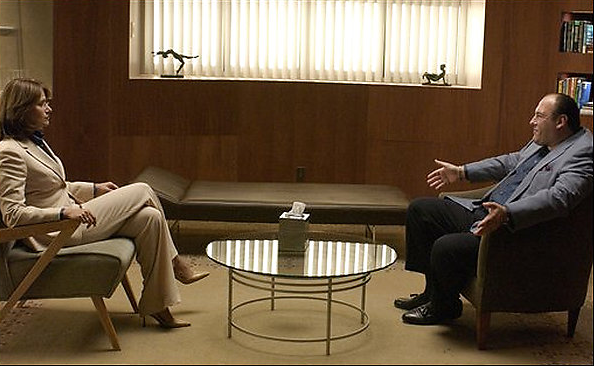Once considered radical, in the last 30 years talk therapy has become an accepted treatment for countless maladies ranging from garden variety depression to full-blown schizophrenia.
How can this be?
How can two people, or a group of people sitting a room together talking for about an hour on a regular basis make a dent in diseases that are powerful enough to cripple the mind and steal lives from those who suffer from them?
What is the invisible, unquantifiable, human-based transaction that makes this possible?
Is it simply a placebo—we think we will get better, and so we do? After all, it requires no drugs, no surgical intervention and most often, no lengthy hospital stay.
How can talk heal?
There are many ways to account for the phenomenon. The latest neurobiological research proves that there are physical changes in the brain during times of stress, fear, love, learning and many other states of being. It also cements the idea of neuro-plasticity, or the fact that the brain can grow and evolve and is not, as was formerly believed, a fixed organism.
This is extremely good news, as it tells us we can influence the health and functioning of our brains intentionally. We need not, in other words, stay trapped in patterns, ruts and routines that no longer serve us well. Talk therapy can change the physical construct of our brains.
As wonderful as this is to discover, however, I think the overarching reality is even simpler and more profound.
The premise behind talk therapy, regardless of the theoretical model upon which it is based, is something called unconditional positive regard. Not all theories would use this phrase to describe the process of a therapist offering, essentially, love, to a client, but all theories nonetheless rely on it as a foundation.
Unconditional positive regard is the mindset a therapist strives to achieve with each and every person who comes to them for help, be they pedophile or priest. It is the belief that everyone deserves to be heard, to have a voice, and to have a secure space in which to use it.
We all have our stories, but so few of them are told.
The relationship between a therapist and a client is absolutely unique. Imagine sitting down with someone you have come to trust, who only has your best interests at heart, who will not judge you, whose sole interest is in picking out the threads of your narrative to find your truth, and who, once those threads are plucked, is bound to hold them tenderly alongside you. Within such a relationship a special kind of opening and growth can take place, an exploration of our deepest selves and a willingness to muck about in the dark places of our soul we most often choose to ignore.
That is the magic bullet.
Few of us have had the experience of being unconditionally accepted. Our lives are fraught with suspicion and betrayal, disappointment and uncertainty, but in this one place, in the therapists office, we can simply be, and that being is welcomed as the important thing it is.
Don’t misunderstand me. Therapy is hard—even with a heart soldier by your side. Tearing off the veils of our self deception is a tricky, often unpleasant undertaking. And not all therapists are created equal. Not all are strong enough to be our interpreter, our ally, our confessor and our teacher all at once.
But a good one can change our lives.
How do we know if we are ready for this journey into the self? Isn’t therapy just for people who are “crazy,” “messed up” or “sick”?
Of course not.
Therapy is for anyone who ever suffered, questioned, sought. It is for anyone who ever wondered “is there more to life than this?”
The Dalai Lama said:
“If every 8 year old in the world is taught meditation, we will eliminate violence from the world within one generation.”
I hold that if every adult had the benefit of good therapy, the same would be true. If we choose to fight our inner battles in the safety of the therapists office, our outward wars will seem dramatically less urgent.
Author: Erica Leibrandt
Editor: Renée Picard
Image: screenshot






Read 0 comments and reply